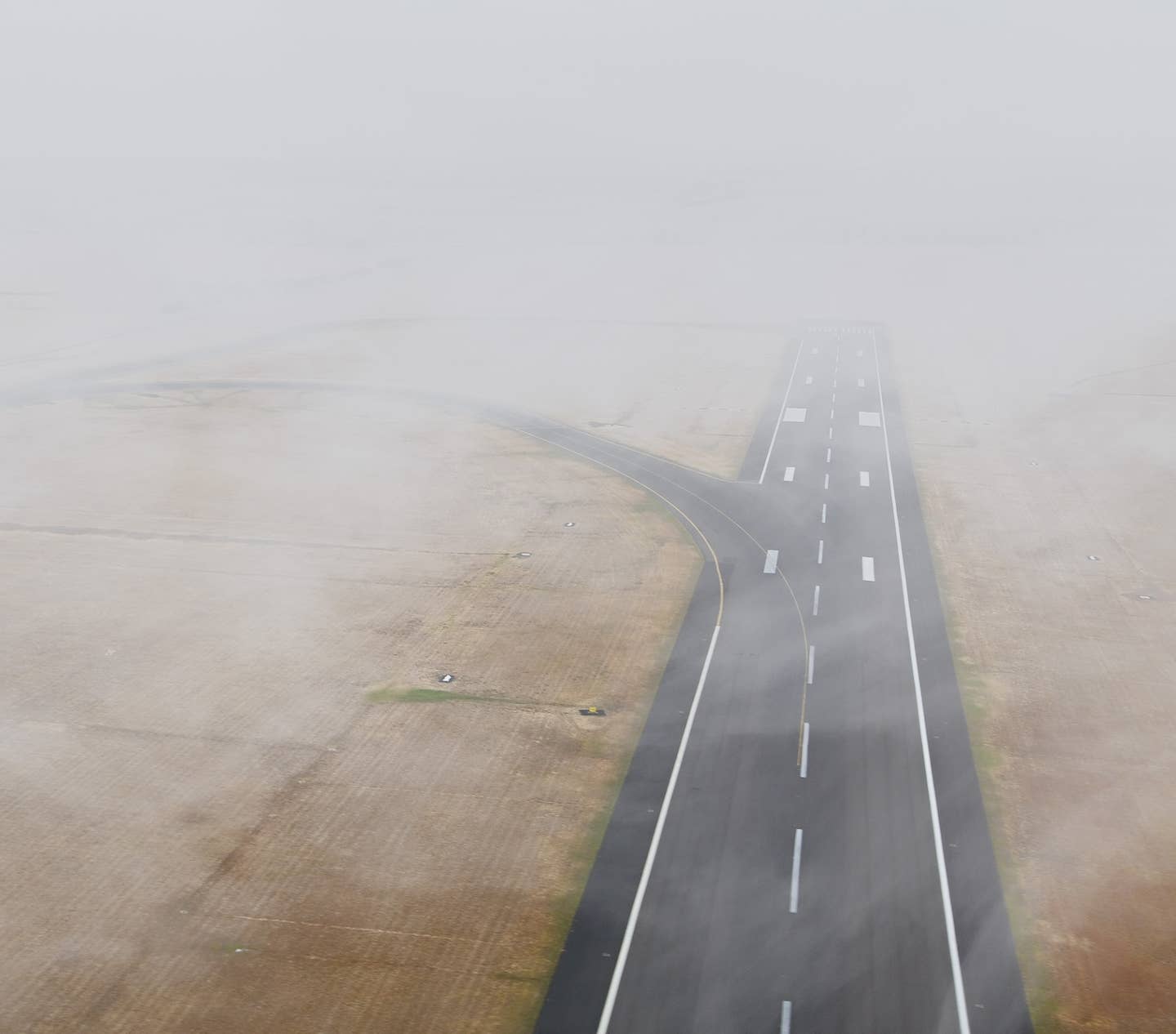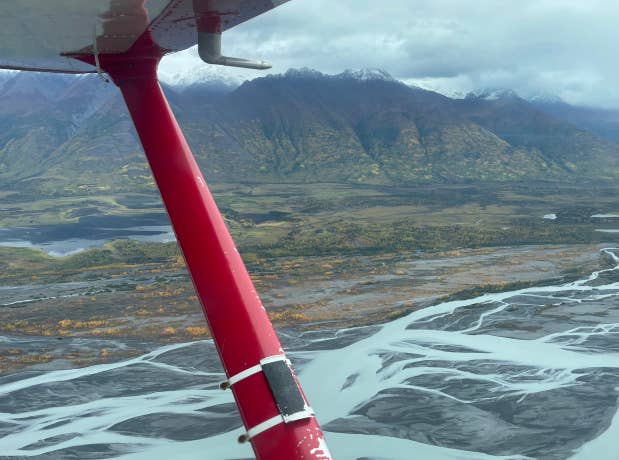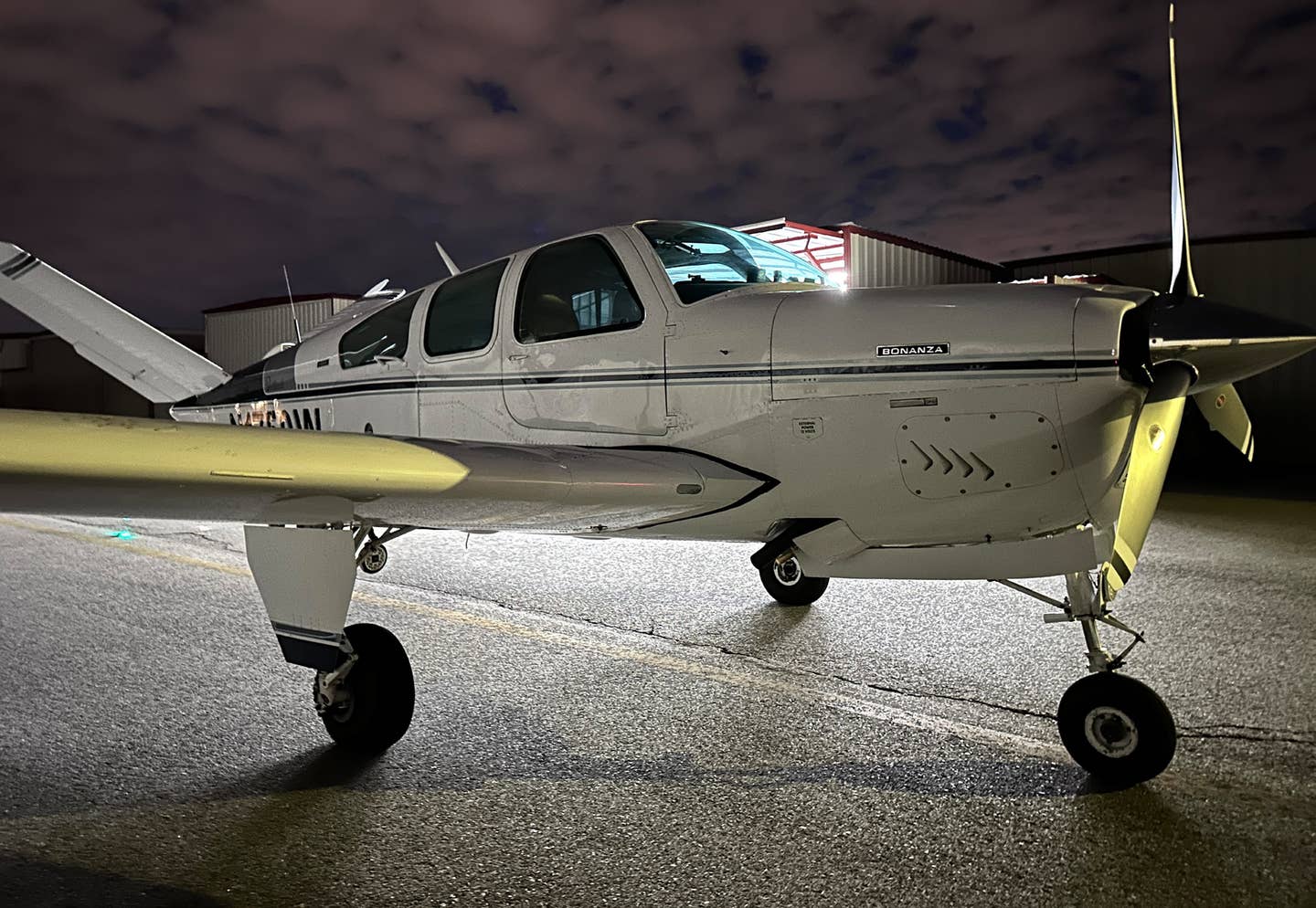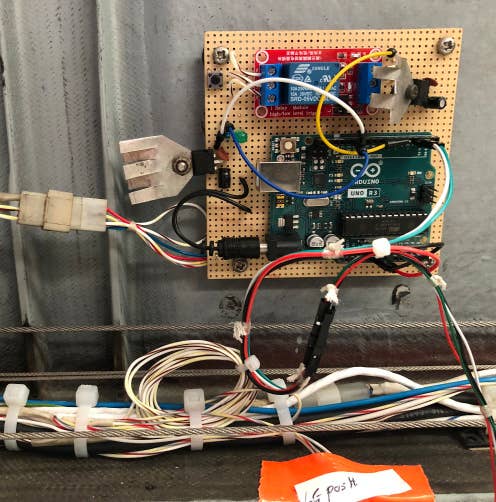Nothing Comes as Expected During Quiet Flight
Glider experience offers a chance to be a beginner again, drinking from a fire hose.
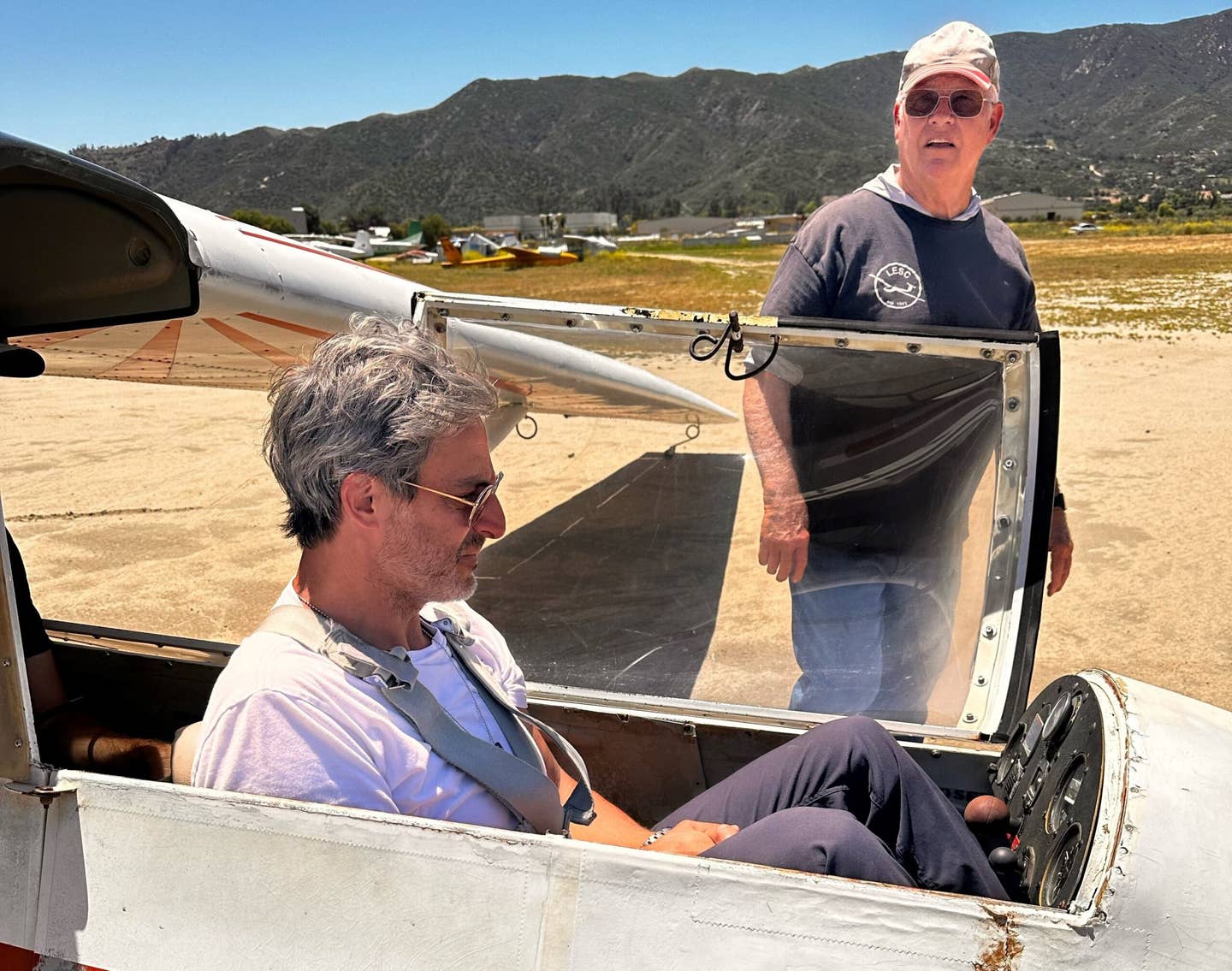
With gliders, FLYING contributor Ben Young (seated) discovered there is no go-around. No second shot. You are going to land one way or another. [Courtesy: Ben Younger]
Sitting in a folding chair under a weathered canopy on a warm California day in Lake Elsinore’s Skylark Airport (CA89), I listened as a group of glider pilots talked about the improving weather.
We were gathered just off of the grass Runway 29L, and everyone stared intently at the ridgeline to our west. When a solitary, tiny cloud formed a few thousand feet above the ridge, the pilots became suddenly animated.
If you're not already a subscriber, what are you waiting for? Subscribe today to get the issue as soon as it is released in either Print or Digital formats.
Subscribe NowThey were coming off of a long stretch of bad weather—little to no wind and sunny skies. The kind of weather that any nonpilot would likely refer to as perfect. That little cloud signaled rising air. Clouds generally form when rising air cools and can no longer hold the moisture it carries.
It’s the rising part that gets glider pilots excited. In fact, it’s the difference between gliding and soaring. Gliding is what you do when you can’t find lift. Soaring is what you do when you can.
A week before heading home from LA, Tom Phillips, a FLYING reader, reached out to me about trying soaring. On the surface, soaring does not meet my criteria for earning new ratings, which largely means frequent usage. I will likely not do a whole lot of gliding outside of my instruction.
However, Phillips explained that it would teach me a great deal about energy management. This is a nice way of saying that if the day should come when the engine in my aircraft quits, I will find myself piloting a very heavy glider.
And so I found myself sitting in LA traffic as I made my way down to Lake Elsinore for my initial lesson. I assumed that the acronym stood for Lake Elsinore Soaring Club. Nope. It came into being in the 1980s as the Low Expense Soaring Club based out of Adelanto, California. I can not imagine how happy they must have been to find Lake Elsinore as their new home. Not a single business card or piece of stationery was lost in the transition.
I was lucky to have Doug Hingst assigned as my instructor for the day. Hingst is a 737 captain and check pilot for Alaska Airlines. He has 17,800 hours with around 350 in gliders. He owns a high-performance glider, and in fact, the day after our lesson he soared for nearly four hours and flew 200 miles on a single tow by finding lift in all the right places.
On this particular Friday morning, we had more modest goals in a more modest aircraft. Hingst helped me get into the Schweizer 2-33A, which was tight but not cramped for my 6-foot-4 frame. The glider weighs about 600 pounds empty and is the instructional workhorse of the American soaring community. I looked around for a headset that did not exist. Right. No 9-liter noise-making monster turning a fan right in front of me.
The cockpit is truly sparse, just a couple of instruments with the VSI being the most important. No attitude indicator, no radios, no screens. The experience, like the aircraft itself, is extremely analog.
Hingst sat behind me as members of the club attached the tow rope to the nose of our glider—the other end of which was attached to an idling tow plane. I was told the rope itself must have 80 percent of the tensile strength of the gross weight of the glider. OK. There are rules. Thank God.
Rich, a 70-something club member, held the left wing up at the tip so that it would not drag on the ground for the initial takeoff roll. I was having a hard time understanding how Rich was going to keep up with an airplane on foot until the tow plane applied throttle. The glider’s wings generate so much lift that within a few strides the wing was able to carry its own weight. Five seconds later, we were airborne leaving all expectations on the ground.
The tow plane took us right toward that ridge in search of exactly the conditions we avoid in powered flight. Namely, turbulence. I pulled the release handle at around 3,200 feet, and the cord snapped forward with the tow plane banking left as we banked right—a routine practice between glider and tow pilots.
Hingst found us a thermal in no time, and after showing me the ropes, let me circle up in the column of rising air. We climbed almost 5,000 feet, going all the way up to 8,000 feet, powered solely by Mother Nature. Hingst’s son was in another glider, and we climbed together in the same thermal.
Expectations I had were quickly challenged.
A few examples:
• There is no communication between tow and glider pilots regarding the moment of disconnecting the rope. You just pull the knob whenever you like.
• A center stick in itself means nothing in relation to roll rates and general authority. I suppose I’ve seen Top Gun one too many times. The Schweizer is a training glider and handles like an ’80s Cadillac with over-boosted power steering. However, that sluggish response also equates to very benign stall characteristics.
• I was told to put the tow plane’s landing gear on the horizon as a marker for where we should be positioned during the climb. I was worried about wake turbulence, but the real issue is getting too high behind the tow plane. This can pull the tail of the tow plane up and into an unrecoverable dive.
• There is no need for headsets. Rushing air is the only sound you hear. Hingst spoke to me plainly, and I was able to hear everything he said. Mostly what I was doing wrong.
• Midair collisions are a real concern in the pattern with powered airplanes. Not so in gliders. Multiple planes operate in the same space, even sharing thermals. I have never been that close to another aircraft, save for my ride in a then-AeroShell T-6 at Oshkosh.
• A 70-year-old person is perfectly capable of running next to a glider on a takeoff roll.
I liked getting everything wrong. It made me shut my mouth and listen. I liked being a beginner again, drinking from a fire hose. My brain enjoys new stimuli, and the experience delivered in spades.
Hingst and I stayed airborne for close to two hours on one tow. We moved along the ridge looking for different thermals, using clouds and even vultures as signs of lift.
We might have gone longer, but at one point after circling up in a thermal, I realized I was sweating profusely even though the temperature inside the cabin had to be in the low 50s. As it turns out, making tight turns in a circle for 15 minutes straight with the sun on top of your head will make you nauseous. Well, it made me nauseous. I asked Hingst if he had an airsickness bag. Negative. He asked me not to throw up if possible. Copy that.
I nonchalantly suggested we head back, praying I didn’t get sick all over the panel. Hingst used the speedbrakes to great effect and brought us in on speed and on target.
This was the one expectation I had that was confirmed: There is no go-around. No second shot. You are going to land one way or another. Better make it count.
This column first appeared in the September Issue 950 of the FLYING print edition.

Sign-up for newsletters & special offers!
Get the latest FLYING stories & special offers delivered directly to your inbox



